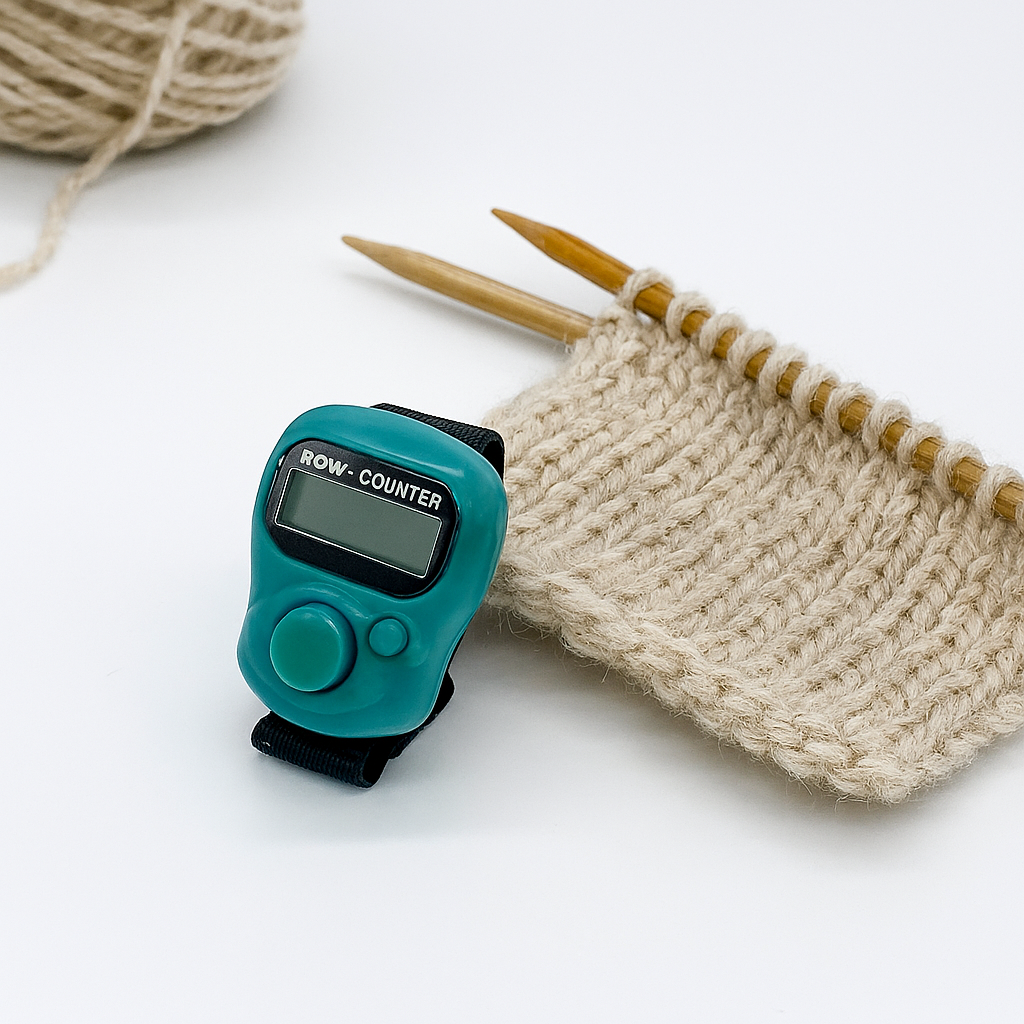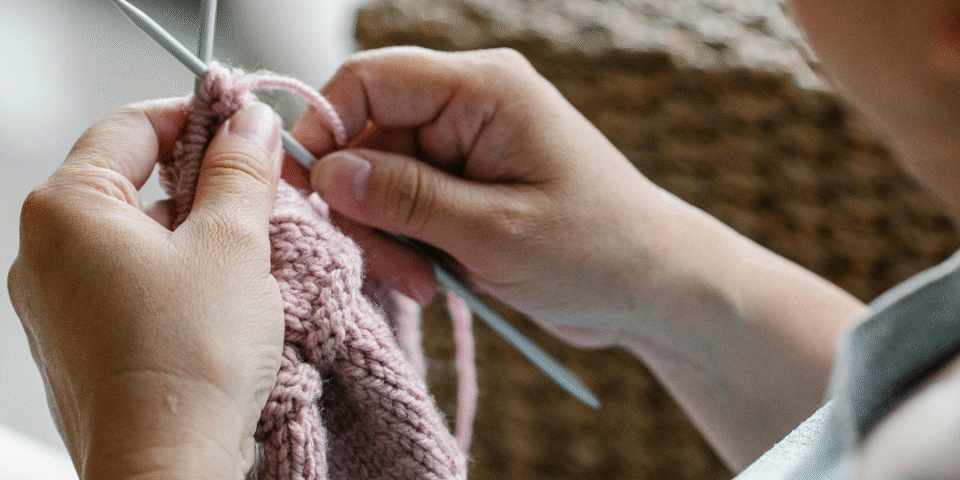Knitting line counter is one of those tools I never knew I needed—until I started working on more complex patterns. As a knitter who often juggles lacework, cables, and multi-part garments, keeping track of rows and pattern repeats became a challenge. The knitting line counter entered my toolkit quietly, but it quickly became indispensable. In this article, I’ll explore its history, types, practical applications, and how it’s transformed my workflow. I’ll also share some personal insights and tips for integrating it into your own knitting practice.
The Origins of the Knitting Line Counter
Before the knitting line counter was a commercial product, knitters relied on memory, tally marks, or physical cues to track progress. In the early 19th century, when printed patterns became popular among recreational knitters, the need for a reliable tracking method grew. At first, knitters used simple tricks—moving beads from one side to another, marking paper margins, or using bracelets to count rows.
By the 1920s, the first mechanical row counters appeared in the UK. These early knitting line counters were enamelled units with rotary dials, designed to slide onto needles. They were functional but clunky, often hard to read and heavy. In the 1930s, bakelite counters emerged in the U.S., offering a lighter alternative. The post-war baby boom of the 1950s saw a surge in hand-knitting, and brightly colored plastic counters became household staples.
Today, the knitting line counter has evolved into a diverse category of tools, from analog clickers to digital apps. But the core purpose remains the same: to help knitters maintain accuracy and rhythm in their work.
What Is a Knitting Line Counter?
A knitting line counter is a device used to track the number of rows or lines completed in a knitting project. It’s especially useful in patterns that involve shaping, repeats, or intricate stitch work. I use mine to avoid mistakes, reduce mental load, and stay focused on the creative process.
There are several types of knitting line counters available:
- On-Needle Counters: These barrel-shaped counters slide onto the knitting needle and advance manually. They’re ideal for straight-needle projects and keep the count visible at all times.
- Pendant Counters: Worn around the neck, these are great for knitters who move between projects or work in communal spaces. I’ve used pendant counters during knitting circles—they’re easy to access and hard to misplace.
- Finger Ring Counters: Compact and stylish, these counters sit on your finger like a ring. A small clicker or spinner lets you advance the count with a flick. I love these for travel knitting—they’re discreet and efficient.
- Digital Counters: Battery-powered with digital displays, these counters often include features like target row settings, alarms, and memory functions. I use mine for lacework and complex patterns where precision is critical.
- App-Based Counters: With the rise of smartphones, knitting apps now offer digital counters that sync with patterns and timers. While I prefer tactile tools, I’ve used apps when knitting on the go or when I need to track multiple elements like rows and repeats.
Why I Use a Knitting Line Counter
The knitting line counter isn’t just a convenience—it’s a necessity. Here’s why I reach for it in nearly every project:
- Accuracy: Even the most experienced knitter can lose track of rows, especially during long sessions or interruptions. The knitting line counter ensures I stay aligned with the pattern.
- Efficiency: Instead of counting stitches or rows manually, I simply click or turn the counter. This saves time and reduces frustration.
- Error Prevention: Missing a row or repeating one can throw off an entire piece. With a knitting line counter, I catch mistakes early and avoid costly unraveling.
- Focus: Knowing the counter is tracking my progress allows me to relax and enjoy the rhythm of knitting. It frees my mind to think creatively or listen to music or podcasts.
- Multi-Project Management: I often work on several pieces at once. Having a dedicated counter for each project helps me switch between them without confusion.
How I Incorporate Knitting Line Counters into My Workflow
When I start a new project, I choose the knitting line counter based on the pattern’s complexity and the environment I’ll be working in. For simple scarves or hats, I use an on-needle counter. For intricate lace shawls, I opt for a digital counter with memory functions. If I’m knitting outdoors or in transit, I wear a ring counter.
I also pair my knitting line counter with other tools. For example, I use stitch markers to indicate pattern repeats and a notebook to jot down notes. But the counter remains central—it’s the anchor that keeps everything in sync.
One of my favorite accessories to pair with my counters is a well-structured project bag. I recently discovered Velvet North’s handmade crochet bags, which are thoughtfully designed with compartments for tools, yarn, and counters. Their craftsmanship complements the precision I strive for in my work.

Choosing the Right Knitting Line Counter
Not all knitting line counters are created equal. Here are some factors I consider when choosing one:
- Visibility: Can I read the numbers easily, even in low light?
- Ease of Use: Is the counter intuitive and responsive?
- Durability: Will it withstand frequent use and travel?
- Size and Weight: Is it comfortable to wear or attach to my needles?
- Compatibility: Does it work with the needle size and type I’m using?
I also consider aesthetics. As a maker, I appreciate tools that are not only functional but beautiful. A well-designed knitting line counter adds joy to the process.
Common Mistakes and How to Avoid Them
Even with a knitting line counter, errors can happen. Here are a few I’ve encountered—and how I’ve learned to prevent them:
- Forgetting to Click: It’s easy to get into a rhythm and forget to advance the counter. I now make it a habit to click immediately after completing a row.
- Accidental Resets: Some counters reset too easily. I choose models with locking mechanisms or recessed buttons to avoid this.
- Misreading the Count: In dim lighting or with worn counters, numbers can be hard to read. I keep my workspace well-lit and replace counters that show wear.
- Using the Wrong Counter: A bulky counter on fine needles can disrupt tension. I match the counter to the project’s scale and materials.
The Knitting Line Counter in Modern Craft Culture
Today’s knitting line counter reflects the evolution of craft culture. It’s no longer just a utilitarian tool—it’s part of a broader movement toward mindful making. As knitting gains popularity among younger generations and digital natives, counters have adapted to include smart features and stylish designs.
I’ve seen knitters personalize their counters with charms, stickers, and color-coded systems. Some even collect vintage counters as part of their crafting heritage. It’s a reminder that tools carry stories, and the knitting line counter is no exception.
For those curious about the broader history and mechanics of row counters, I recommend reading this Wikipedia article on knitting counters. It offers a fascinating look at how these tools have evolved over time.
Final Thoughts
Knitting line counter is a tool I once overlooked—but now I wouldn’t knit without it. It brings order to complexity, supports creativity, and enhances the joy of making. Whether you’re a beginner or a seasoned knitter, investing in a good counter is one of the smartest moves you can make.
As I sit down to knit today, my counter is already in place. It’s a small gesture, but it sets the tone for precision, care, and intention. And in a craft that values every stitch, that’s no small thing.
So if you haven’t tried a knitting line counter yet, I encourage you to explore the options. Find one that fits your style and needs. Let it become part of your rhythm. You’ll be surprised how much smoother—and more satisfying—your knitting becomes.
Sources:

